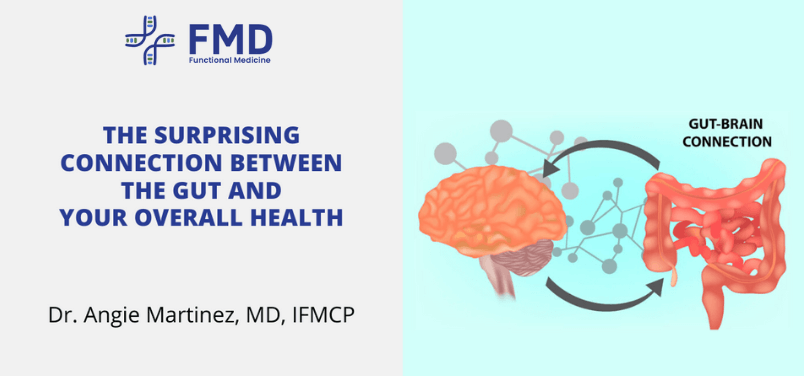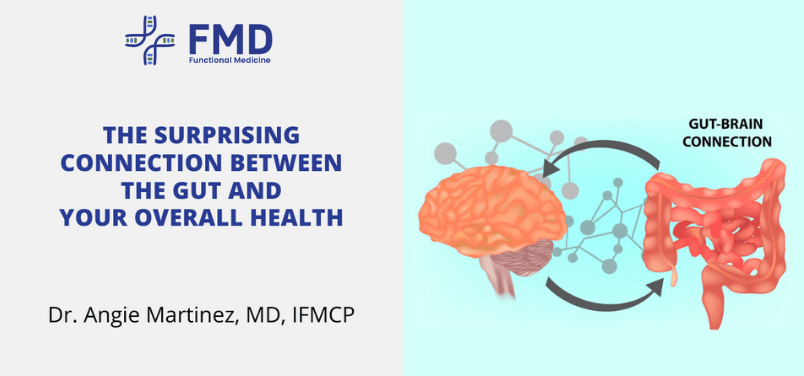 |
Dr. Reshma Patel, MD Functional Medicine Doctor Adrenal Health Expert |
Based on an interview for WebFMD
Causes | Stress | Breathing | Diet | Exercise | Supplements
In our last article we talked about the common causes of HPA axis dysfunction, with a particular focus on the negative impact modern life has on our adrenal health. But what can we do about it? Living in the western world, is it even possible to escape from constant stress?
I remember very clearly the time after I finished my medical residency training. I was so exhausted and sleep deprived, I did nothing but sleep for two straight weeks. These long months of stress, working around the clock, took a major toll in my health and well-being. I think I needed every minute of those two weeks to rest and perhaps even more.
Luckily, if we allow it, the body has the ability to naturally heal and restore itself. In this article, I will share with you some of my favorite evidence-based ways that can help our minds and bodies better manage stress and support healing of the HPA axis.
Find the Underlying Cause of HPA Axis Dysfunction
Certain chronic conditions such as autoimmune disease, hypothyroidism, mold illness and others can lead to HPA axis dysfunction, especially when the underlying root cause of these conditions is not addressed. For this reason, looking at your medical history is always a key part of the treatment to identify risk factors that may be unique to you. In fact, the treatment needed in each case can be completely different based on other chronic illnesses you might be battling.
Our Subconscious Perception of Stress
 I find that a big part of the problem with stress is related to the way we perceive stress. We are not actively saying we want to be stressed, but our stress response is elicited through our interpretation of events.
I find that a big part of the problem with stress is related to the way we perceive stress. We are not actively saying we want to be stressed, but our stress response is elicited through our interpretation of events.
When a situation arises, how you see it and experience it is ultimately a choice. Your reaction to events determines whether we will have a “fight or flight” sympathetic or a calming parasympathetic nervous system response. For example, being cut off in traffic. You can either scream at the other driver, even though they won’t hear you or be angry all the way home. Or you can say, ”oh well, maybe they are in a hurry” and let it go. Do you see how you have a choice about how you will react?
I believe that this is where your power lies; as you become aware of your individual reaction, you then have more control of how you respond to life’s events.
A few exercises that can help you gain perspective include:
- Writing a gratitude journal:
Being grateful for what is going well, instead of focusing on what is wrong in your life, can help you shift your perception and mindset. - Practicing meditation:
Regular meditation can help calm your mind and sympathetic nervous system. It can also help you become mindful of dominating thoughts that may influence the way you perceive stress. - Acupuncture:
Often overlooked, acupuncture may calm the nervous system and help you better deal with stress. A study found that students that reported high stress who receive acupuncture therapy, decreased their perception of stress.[1]
Natural Ways to Cope with Stress
Here are a few of my favorite evidence-based methods and techniques to handle stress and promote the healing of the HPA axis. You don’t have to do all of them, of course. Start with the ones that you feel most connected with and add them to your daily routine.
Spend more time in nature
 Studies have shown that spending time in nature can help calm the sympathetic nervous system and promote a sense of well-being. Humans are programmed to be outdoors while the sun is shining and then to sleep indoors at night. Melatonin, the hormone that regulates the sleep-wake cycle is produced during the evening hours, upon exposure to darkness. Melatonin production stops when we are exposed to sunlight.[2]
Studies have shown that spending time in nature can help calm the sympathetic nervous system and promote a sense of well-being. Humans are programmed to be outdoors while the sun is shining and then to sleep indoors at night. Melatonin, the hormone that regulates the sleep-wake cycle is produced during the evening hours, upon exposure to darkness. Melatonin production stops when we are exposed to sunlight.[2]
When possible, start your morning by spending a few minutes outdoors to help sunlight turn off melatonin production and signal your body that it is time to wake up.
Breathing Exercises
Breathing exercises can be very helpful to cope with stress. Some of my favorite ones that I find very easy to do, include:
Alternate nostril breathing
 A known pranayama yoga practice that can cleanse the nasal cavity and stimulates the parasympathetic nervous system. It involves inhaling through one nostril at a time, then switching nostrils.
A known pranayama yoga practice that can cleanse the nasal cavity and stimulates the parasympathetic nervous system. It involves inhaling through one nostril at a time, then switching nostrils.
To start:
- Close off the “inactive” nostril with your thumb
- Inhale through the active nostril
- Close the active nostril with the index finger
- Exhale through the “inactive”/alternate nostril
- Repeat the cycle; continue for six full breaths, three on each side.
4-7-8 breathing exercise
Developed by Dr. Andrew Weil, this technique includes three steps: you inhale through your nose for four seconds, hold for seven seconds, and then exhale through your mouth for eight seconds. You can do these two or three times a day, before or after a stressful event or experience.
Get enough rest
Making sure you have enough rest and sleep is essential as this is when the majority of the adrenal gland healing occurs. In a healthy state your body needs good quality sleep to function; The goal is to get at least 8 hours a night of high quality sleep with no interruptions. If you are ill or struggling with HPA axis dysfunction, however, you may need more sleep to allow your body to properly heal.
Diet for HPA Axis Dysfunction
 I find that the dietary approach for the HPA axis dysfunction treatment may vary with the individual, so it is always best to work with a trained health practitioner and tailor the diet to your body’s individual needs, eating philosophy, lifestyle, and other personal preferences.
I find that the dietary approach for the HPA axis dysfunction treatment may vary with the individual, so it is always best to work with a trained health practitioner and tailor the diet to your body’s individual needs, eating philosophy, lifestyle, and other personal preferences.
A good place to start for most people may be a plant based whole foods anti-inflammatory diet that is then further customized for each patient. The foods that are included in Dr. Andrew Weil’s anti-inflammatory diet protocol can be used as a guideline (with slightly fewer grains). Here are some general dietary guidelines to help you get started:
- Eat from the Earth and not of the Earth:
Focus on whole, plant based natural foods and minimize processed, refined or packaged foods.
Ideally, ⅔ of your plate should be vegetables with small portion of protein in every meal. Add whole unrefined grains if needed. - Eat a Rainbow of Fruits and Vegetables:
Incorporate as many colors as you can. Each color offers different phytonutrients and health benefits. - Rotate Your Fruits & Vegetables:
Don’t eat the same foods all the time; rotating your fruits and vegetables will give you a higher variety of vitamins, minerals and other nutrients. - Eat Local & Organic:
Sticking to organically grown local foods (as much as possible) can help reduce your exposure to pesticides that are known to stress the body. Local foods are usually fresher and more nutrient dense. - Use Spices:
Eating healthy doesn’t mean eating flavorless foods. Use natural spices such as turmeric, cinnamon, oregano and others to add flavor so you enjoy your meals. - Don’t Skip Meals:
Going for several hours without eating can stress the body or cause you to grab the first thing you find, so you may end up eating unhealthy foods. If you travel or have a busy lifestyle, prepare ahead and pack natural healthy snacks like almonds, fruit or natural energy bars such as Larabar.
Avoid Coffee & Caffeine
 Caffeine causes our bodies to produce cortisol and can also disrupt sleep. Therefore, it is important to avoid coffee or other caffeinated drinks during HPA axis dysfunction treatment.
Caffeine causes our bodies to produce cortisol and can also disrupt sleep. Therefore, it is important to avoid coffee or other caffeinated drinks during HPA axis dysfunction treatment.
Quitting coffee all of a sudden is usually a challenge, however, and you may want to slowly begin to cut back on your intake. A few caffeine free alternatives I often recommend to my patients that may help you in this transition:
- Rasa tea is a wonderful hot beverage which has a blend of several adaptogen herbs that can help you feel more grounded, refreshed and support your adrenal health. It doesn’t taste like coffee, but if you miss drinking something hot instead of coffee, it may help.
- Tulsi Tea (holy basil) is another caffeine free herbal beverage that can also support your adrenals and help you in this transition.
Best Supplements for HPA Axis Dysfunction

There are several supplements and herbs that can be very helpful for HPA axis dysfunction treatment, although they should always be tailored to the individual, to account for individual sensitivities, deficiencies and unique preferences.
Adaptogen Herbs
Adaptogen herbs contain naturally occurring components that can help the body cope better with stress. Some of the key herbs I find very useful include Ashwagandha (Withania somnifera) and Rhodiola rosea.
On that note, not everyone responds the same to adaptogen herbs. So depending on the patient, I may use Ashwagandha by itself, or combine it with Rhodiola and in some cases with the amino acid l-theanine. L-theanine is another great natural alternative shown to promote relaxation and help the body handle stress.
Vitamins & Minerals
The vitamins and minerals every person may need can vary depending on individual deficiencies. There are however a few key ones that play a key role in the body’s stress response:
- Vitamin B complex supports the body’s ability to handle stress
- Vitamin C naturally controls elevated cortisol levels
- Vitamin D supports the immune system (many people have low levels)
- Magnesium often becomes low as a result of stress.[3]
Essential Oils
If you are a fan of aromatherapy, you may already know that certain essential oils such as lavender can also help to calm and relax the body and mind. You can try lavender essential oil by inhaling or applying on the skin near the heart, chest or temples.
Best Exercises for HPA Axis Dysfunction

Performing high intensity exercises such as running when your body has low adrenal reserves can make you feel drained and exhausted. I find gentler exercise at the beginning of HPA axis dysfunction treatment is a much better fit. Good examples include walking or low-intensity forms of yoga such as restorative yoga that can help relax the body and muscles.
HPA Axis Dysfunction Treatment: Final Thoughts
Although HPA axis dysfunction is a very common issue, it is not always properly diagnosed or treated.
The good news is that the body has the ability to heal and restore to normal adrenal function, if supported correctly. The healing process can vary from one person to another and can take anywhere from six months to a year. You may feel much better however, after a few weeks.
I hope you find this information helpful in your journey to optimal health and wellness. Use this information to educate yourself. Work closely with your health practitioner to evaluate the potential underlying causes and treatment options you may have.
Read Next
HPA Axis Dysfunction: The Facts You Need to Know
- HPA Axis Dysfunction Treatment: The Functional Medicine Approach - November 3, 2019
- HPA Axis Dysfunction Explained: The Facts You Need to Know - November 3, 2019





Very good info. Thank you
Thank you for this very good information on adrenal support. It sounds like you provide you patients with excellent care.
thank for the great article!!!
Good article, thank you! One side note for readers, please beware of Rhodeola if bipolar mood disorder runs in your family. Rhodeola can throw bipolar people into mania within a few days (and since mania is harder to bring under control than depression, that’s a big problem). Many mood boosting blends contain Rhodeola, and it seems most health food store folks don’t usually know to warn people of bipolar genetic proclivities to avoid Rhodeola. Blessings, and thanks again for a great article!
Of course, if I spelled Rhodiola correctly, perhaps my comment would be taken more seriously, LOL! Sorry, have been avoiding coffee, and here is the outcome!
Thank you for the information. I have been going through many, many tests for Cushing’s, Addison’s, Hypothyroid and Pituitary lesion. For 8 months my body just went haywire with every symptom falling within these diagnosis. Weight gain of 40 lbs, full face, bulky stools, foggy brain, irritability, insomnia, irregular menses or none at all, hair dryness, facial hair loss, painful acne, breathing heavier, higher blood pressure, extremity weakness, abdominal pain, breats discoloration, purple stretch marks, back pain, kidney infection, urinary tract infection, headaches, dizziness, nausea, and vomiting. High prolactin, low cortisol, high insulin growth hormone, neg MRI for pituitary lesion, normal ACTH stim test. The Physician still has not been able to diagnose problem. Could it be HPA Axis dysfunction? Or Systemic Lupus or other Autoimmune. My mother has SLE.